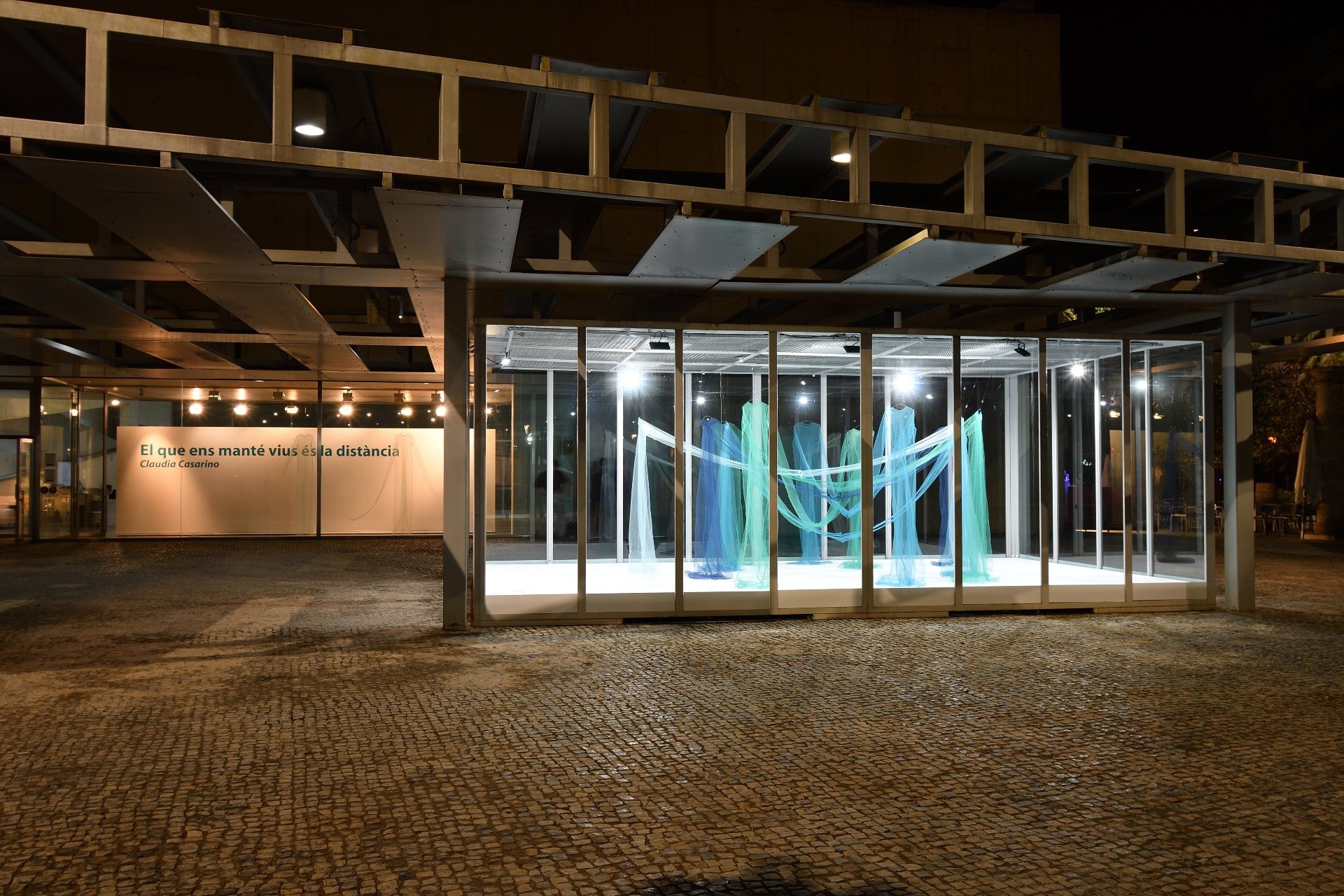Distance keeps us alive
Tulle gowns
Variable meassures
2020
THE COLOR OF THE POSSIBLE
One of the most complicated paradoxes of contemporary art originates in its desire to assume its own present without being trapped by the obviousness of what is referred to. On the one hand, art cannot avoid its commitment (its vocation, its destiny) to name the drama that moves its time; On the other hand, he cannot renounce his fundamental job that pushes him to face his object through complex formal procedures that involve detours, distances, side glances and, even, silences. Faced with the misfortune of a world battered by the pandemic, art cannot ignore the horror, but neither can it expose it directly and literally seeking shock and impact. He must neither look away nor give up his serious task of showing the world from a biased perspective; from the detour of the forms, which always intervene in what is shown. (They partially mask it to show it with greater intensity).
But today's art also has another challenge: that of inscribing its forms on surfaces saturated with representations moved in the key of advertising, communication and spectacle. How to make the poetic voice (aesthetic, political, ethical) heard in a strident and overlit global space? There are two extreme resources: that of shouting above the loud global noise or that of lowering one's voice to almost silence, or even silence itself, thus seeking to establish a counterpoint in the course of a culture crammed with signs and images, dazzled by reflectors; collapsed as an inscription surface. Claudia Casarino opts for the second strategy: lowers her voice, reduces the visual load of her images, occupies the space with minimal gestures. It borders on silence, it is silent, perhaps following a path set by Adorno when he states that “in the world of manipulated consensus, authentic art only speaks in silence.” But the silence of art is not muteness, but rather an active pause, pulsating with resonances; It is an impulse of renewed meanings. The poetic expresses itself best from the detour of lack.
Claudia faces the brutal reality of the pandemic by gradually distancing herself from an excessive issue. He works with laconic forms, delicate nuances and concise compositions. He arranges transparent blue-green robes in a stripped-down space, in such a way that the long sleeves of the garments are linked together as arms are commonly crossed in indigenous rituals: propitiatory ceremonies for better times, dances that move the social body and They summon their unit. Art cannot bring about the advent of a favorable time, but it can invoke it. Its operations imagine what could be, giving forms to the desire for it to be so. Art does not divine the future, but it leaves open the place of promise: the expectation of futures that, although they may seem impossible in times that are too dark, must be stubbornly invoked through ritual and desire, through the appropriate form and commitment. poetic. “The impossible is not something that could never happen, but something that drives us to act as if it were possible,” says Benjamín Arditi. Nothing guarantees the fulfillment of this action, but taking on the challenge of imagining its achievement is the last card that art has to keep the place of the event available: there from where you can see, for a moment, directions that are invisible because perhaps not yet. exist.
The forms that Claudia uses are those of the collective ritual, that of the solidarity meeting, that of dance. Matisse's “The Dance” represents a group of five people holding hands moved by the pure drive of life. According to the painter, this work reached “the climax of overwhelming luminosity.” The vital energy is the same in the circle of an indigenous ceremony and in that of an exalted dance of pure light. The artist traces the propitiatory circle itself, appealing to the effectiveness of the image by promoting the intertwining of the bodies, filtering the light through the transparency of the robes. The light may be that of an overlit hospital room, but also that of the desired place, that of the community to come freed from the threat of Covid-19, beyond the shadows of the predatory model whose hegemony threatens the persistence of the green and blue colors of globalized space. The range of green and blue colors of the gowns correspond to the shades of the uniform used by doctors who seek to ward off the pandemic with the strength of their clasped hands; that try to contain the adverse powers and restore the threatened balance.
In their effort to connect, the long empty sleeves arch loosely to create a light weave of crossed bands, as if seeking to replenish the violated social body. As if they sought to support the absent human body. The gradation of cold tones also coincides with those of a portion of the planet seen from satellite: the parts corresponding to water and vegetation. The area threatened by the expansion of unleashed capital.
In his latest works, Casarino persistently works with Humboldt's pioneering thought regarding the colonizing exploitation of human and environmental resources. Regarding this work, it brings up the position of the Prussian scientist and humanist who considers the interconnection of living organisms and challenges us to conceive a new vision of nature. Claudia faces the challenge by imagining the environment as an animated landscape and the globe as a number of threats or expectations, as an encrypted message. Both are represented by the gradation that unites green and blue, the range that, as mentioned, characterizes the uniform of medical personnel worldwide.
The Guaraní, whose figures are always present in the imaginaries and representations of Paraguay, call hovy the bluish green color of the forests, water and sky. Hovy is the color of the horizon that marks a line always ahead: the lintel of the impossible/possible that we must desire in order to continue breathing.
Ticio Escobar








